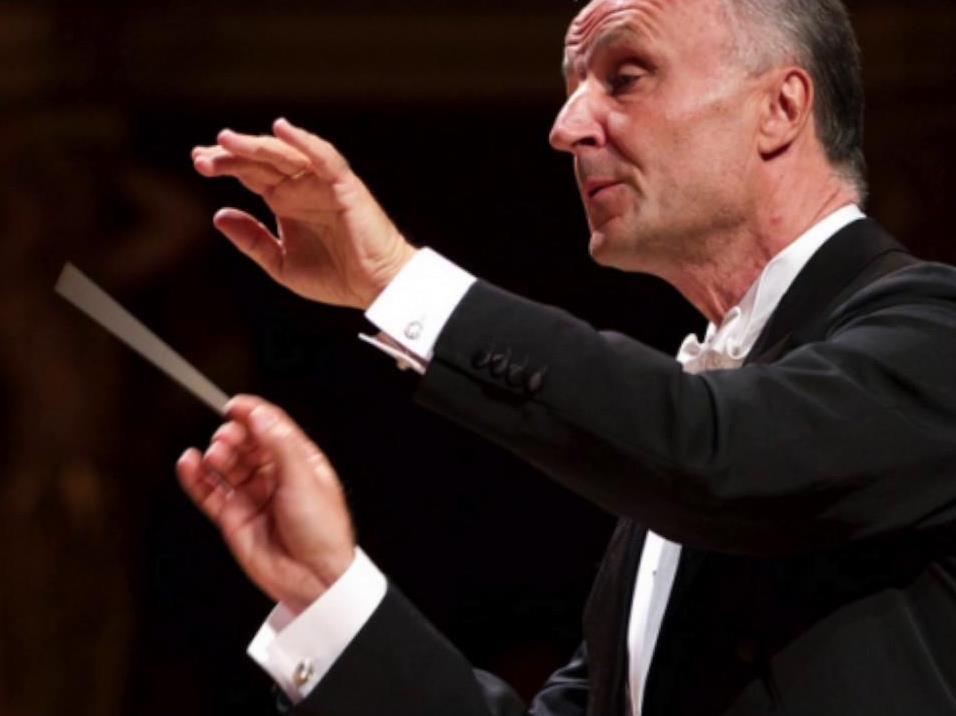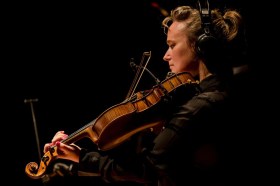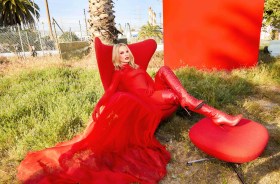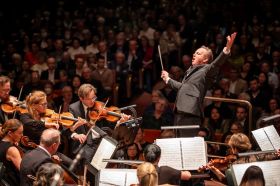Conductor Oleg Caetani. Image via YouTube.
Verdi’s Messa da requiem (1868-74), a setting for the Roman Catholic funeral mass, had a complicated genesis. It began as a commemoration of Gioachino Rossini (as the Messa per Rossini) composed by a selection (chosen by committee) of 13 Italian composers – one of whom was Verdi – and intended for performance on the first anniversary of Rossini’s death. The project was abandoned owing to several factors, largely administrative. Moreover, Verdi insisted from the start that women sing in his chorus. He was not at all inspired by the sound of boy sopranos; at that time there was still a prohibition on women singing in liturgical performance but he favoured the fuller sound of the operatic chorus. Assembling adequate instrumentalists for his large orchestra, as well as sourcing satisfactory soloists also became problematic.
After the project collapsed this ambitious first manifestation was thereafter shelved and not realised until its restoration in 1988. It was the death of Italian writer and patriot Alessandro Manzoni in 1873 and a private visit to his graveside that inspired Verdi to revisit the project, but this time with the intention of composing the entire work and not just his earlier contribution of one movement, the Libera me, Domine.
Verdi had scant faith in Christianity. What he conceived in his Messa da requiem was a highly theatrical work of “vast dimensions, a large orchestra and a large chorus [with] four or five principal singers”. Unsurprisingly, following its first performance, the work immediately appealed more as a concert piece, particularly given that it was quite unsuited for liturgical use. It was thereafter suggested, tongue in cheek, that the Messa da requiem was the composer’s finest opera, while the famous critic Hans von Bülow dubbed it an “opera in ecclesiastical costume”. Nonetheless, its premiere conducted by the composer was in San Marco, Milan in liturgical context with the women in the chorus veiled and dressed in black, while the archbishop requested that “they be hidden by a grille, off to one side, or something similar”. Nonetheless, its performance at La Scala opera housed a few days later was a much more accommodating and convincing occasion, free from archaic intervention.
Such is the work’s appeal that it has since been performed with sets, in an outdoor arena, arranged for brass bands and even for multiple pianos. It was common practice for some of the movements to be encored. The soloists Verdi had in mind were quite specifically operatic particularly the “dramatic soprano par excellence, powerful and passionate in utterance but dignified and disciplined in manner”. Verdi revised his previously completed Libera me, Domine as the work’s final movement. The musical material of the affecting and frightening Dies irae returns throughout, painting an intense picture of the Day of Judgement, the end of time. Overall, the work might be described as darkly Gothic and brooding, even grim, with occasional brief shafts of hopeful light along with the cool shade of meditative prayerfulness.
For this performance the Sydney Symphony Orchestra performed with distinction under the masterfully finessed and elegant direction of Oleg Caetani. On Thursday night Caetani demonstrated a life-long and intimate understanding of the Verdian style, encompassing heartfelt rhetoric, subtle phasing and attention to detail with dynamics and articulation, as well as perfect observance of the score’s metronome markings from start till finish. This was only to be expected from the maestro of opera whose sensibility has been formed from a 20-year partnership with Orchestra Sinfonica di Milano Giuseppe Verdi.
A performance of Verdi’s Requiem can be quickly become overdone, feel heavy and overwhelming with much thump, bluster and choral shouting. On this occasion, however, there was a disciplined regular understatement, sensitivity and tenderness in evidence throughout. The orchestra’s performance was vivid and refined, particularly impressive given that so many principal players (including the concertmaster and associate concertmaster) were on leave or absent on exchanges with other orchestras. Of note was the refined flute playing of Lisa Osmialowski and the rich voicing and balance of the entire brass section, including Perry Hoogendijk on exchange from the Royal Concertgebouw Orchestra playing both tuba and the splendid Ophicleide, a 19th-century invented and patented instrument Verdi features in the work. But surely nobody will be able to forget for some time the thrillingly mighty bass drum whacks (Rebecca Lagos, principal percussionist) in the Dies irae sections.
The four soloists ranged from good to very fine: Angel Blue’s soprano was quite superb displaying a rich and creamy chest voice, agility with extraordinary technique, effortlessly soaring above the entire performing ensemble with several sustained high Cs. Also in very fine voice was mezzo-soprano Catherine Carby who straddled the taxing range that Verdi admitted was both that of a contralto and mezzo. Although there were minor errors tenor Diego Torre had a perfect bel canto texture, line and style for the work. Though rich in his lower range and having an enjoyably focused sound, French bass Jérôme Varnier was sometimes overwhelmed by his soloist colleagues and the orchestra, the upper tessitura of his voice sometimes sounding thin. There was occasionally a difference of opinion in the soloists’ pronunciation of Latin.
It was remarkable and impressive that along with the soloists, the excellent 250-voice Sydney Philharmonia Choirs sang the work entirely from memory. They had clearly been diligently trained by Brett Weymark, their artistic and musical director and his team. Occasionally dividing into an eight-part double chorus the choirs amply demonstrated a close attention to detail in the shaping and articulation of phrases particularly in the complex fugal sections. There was evident balance and rapport between all parts.
We should all be proud to celebrate that this excellent performance was streamed to 800 cities and 120 countries throughout the world as part of the Make Music Day on Thursday evening, the first time Australia has participated in this significant international event.
Four and a half stars: ★★★★☆
Verdi’s Requiem
Sydney Symphony Orchestra
Oleg Caetani, conductor
Angel Blue, soprano
Catherine Carby, mezzo-soprano
Diego Torre, tenor
Jérôme Varnier, bass
Sydney Philharmonia Choirs
Brett Weymark, artistic and musical director, Sydney Philharmonia Choirs
Presented by Sydney Symphony Orchestra
Meet the Music
Concert Hall, Sydney Opera House
Thursday, 21 June, 2018
6.30pm






